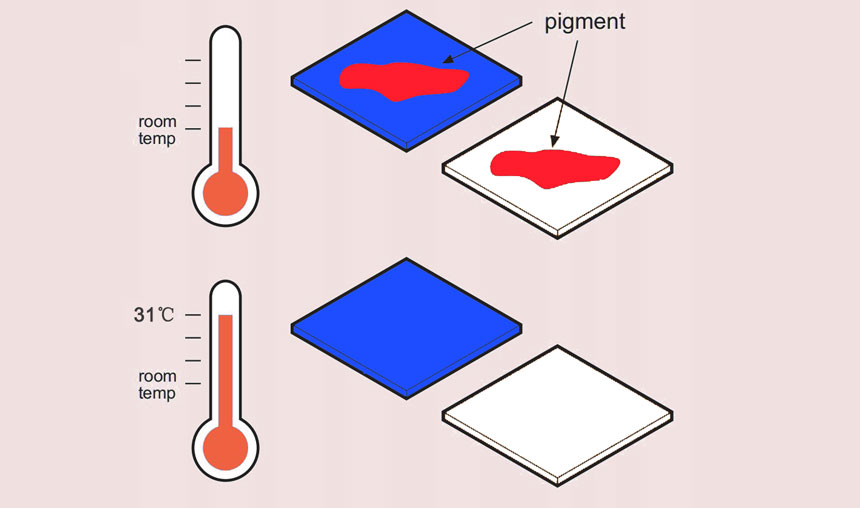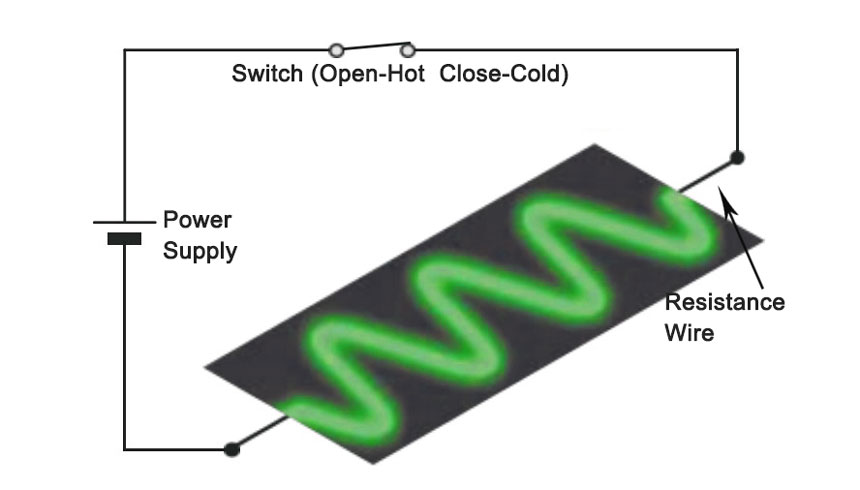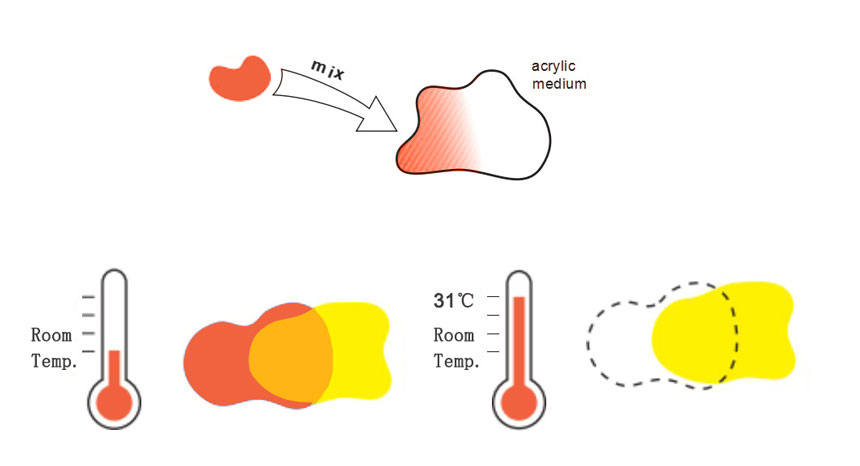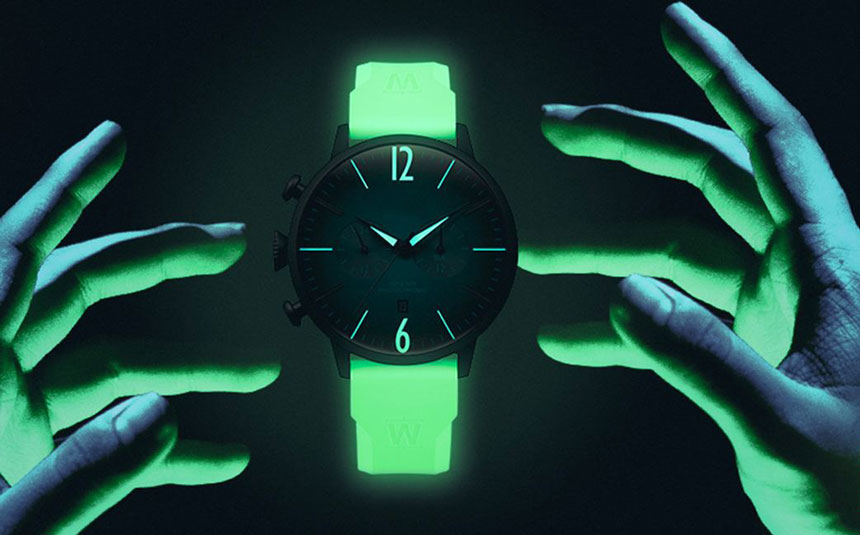categories
recent posts
Plastic cups that change color and road signs that glow in the dark are just two examples of products that are bringing more magic color to usual life thanks to new materials.
With advancements in technology, we now have color-changing thermochromic pigments that are commonly used in inks or paints for wide applications or as plastics in injections.
Luminous pigment (also called Glow in the dark powder), a new type of Energy storage luminous pigment. It has also found its way into injection molded plastics, opening up exciting possibilities for design in instrumentation and low-level lighting systems.
However, Mixing these 2 different materials and using them for the same application purpose is still a difficult task. Fortunately, iSuoChem has arrived to solve these problems by allowing the combination of complex pigments with ordinary acrylic paint, enabling the creation of personalized thermochromic and luminous pigments.
Thermochromic Pigments: Changing Colors with Temperature
Thermochromic materials possess the unique property of changing color at specific temperatures, such as 5°C, 10°C, 16°C, 31°C...70°C, 78°C. Typically, they are incorporated into special inks suitable for printings, coated screen, resulting in the creation of textiles, paper, plastic films, glass, ceramics and wood. Among them, a type of thermometers or temperature indicators by plastic films are welcomed. A notable example is the battery test strip, where the current flowing through a printed resistor under the thermochromic film heats it up and triggers a color change. These materials are often based on liquid crystal technology, where liquid crystals realign at certain temperatures, giving the illusion of a color shift. This thermochromic pigments are formulated as liquid paste compatible with any acrylic medium. With four available colors plus black, these pigments can be mixed with acrylic paints to generate an extensive array of color variations.

1. The Principle of Thermochromic Pigments

At room temperature, thermochromic pigments display their characteristic color, but once the temperature reaches a specific threshold, the color disappears. For instance, when applying red thermochromic pigment to a blue surface, if the temperature crosses the change-over point, the surface will transition from red to colorless(Red to colorless: Decoloration series), and the base color-blue color will appear.
The same pigment applied to an white surface will cause the color to shift from red to white at that temperature. The reappearance of the pigment's color occurs as the temperature decreases.
2. Using Thermochromic Pigments
To begin experimenting with thermochromic pigments, it is advisable to create a test/demonstration strip on paper or plastic sheeting, such as a thin-walled plastic cup. Mix a small quantity of pigment into the acrylic base and dilute it with water if needed, ensuring it can be applied with a small paintbrush. Allow the painted surface to dry in a warm location, where the color-change effect will become apparent even before the drying process is complete. Another exciting approach is to paint samples onto a thin-walled plastic cup and alternate filling it with hot and cold water, observing the immediate and dramatic color changes.

3. Applications of iSuoChem Thermochromic Pigments
The iSuoChem range of effect pigments is specifically designed to undergo a color change at near body heat, making them ideal for garments that shift in color when worn or touched such as all kinds of garments. These pigments find applications in various scenarios where temperature warnings are necessary, such as ceramic mugs, hot surface indicators, food storage, or medical related indicators.
A captivating visual display concept involves utilizing resistance wire positioned behind a sheet of Green-colored paper coated with black thermochromic pigment. When the wire heats up, it causes the green color to emerge from beneath the pigment. This innovative principle offers various applications, such as creating message displays or developing battery and fuse testers.

The true creative potential arises when these pigments are mixed with acrylic paints of different colors. For example, by combining red pigment with yellow acrylic paint, the resulting color is orange. However, at 31℃, the red hue vanishes, and the orange transforms into yellow. The possibilities for color variations are virtually endless.

Luminous pigments: Illuminating the Dark
The Luminous pigments available in powder form which was initially developed as a safer substitute for Various switch signs on aviation instruments, clocks, windows, machines, door handles, etc. are of great use, Various transparent plastics can also be pressed together to make various symbols, components, and supplies (such as power switches, sockets, fishhooks, etc.). This pigment has the remarkable ability to absorb and store energy, providing an afterglow that lasts up to ten times longer than traditional phosphorescents made from zinc sulfide. Once exposed to natural or artificial light, it can emit a glow for practically the entire night.

When using the Luminous pigments, it is important to avoid prolonged exposure to moisture. However, it can be mixed and applied with acrylic base or white acrylic paint. Dilution with water is possible, as long as the drying process is expedited. The hardened acrylic effectively seals the pigment, creating a water-resistant film. Due to its high concentration, only small amounts of the pigment are needed to achieve glow effects in the dark.
1. Using Luminous Pigments
Similar to the thermochromic pigments, it is recommended to create a test strip using paper or plastic sheeting when working with Luminous Pigments. Experiment with different proportions of pigment mixed into acrylic base or white acrylic paint, adjusting fluidity by adding water as necessary. Afterward, allow the test strip to dry quickly in a warm place. Once dry, expose the strip to daylight or a bright artificial light source, like a flashlight, and then examine it in a dark environment. When exposed to light for at least 20 minutes, the material should emit a significant afterglow that can last up to 6 hours.
2. Applications of iSuoChem Luminous Pigments
Although initially developed for switch signs, the Luminous pigments has found a multitude of uses, as evidenced by the variety of glowing objects available in stores. Its applications extend to luminous inks, luminous paints, luminous stones, luminous master batches, or even luminous threads. This pigment excels in nighttime illumination, providing visible light even in complete darkness. Additionally, paper or film coated with the pigment can act as a temporary photographic plate when exposed to light through a mask or photographic negative, opening up possibilities for recreational and practical applications.

iSuoChem Application Techniques
Given that both thermochromic and Luminous Pigments are mixed with acrylic, the viscosity of the base can be adjusted by diluting it with water to suit different application methods. A relatively thin mixture can be applied with a brush, while a thicker paste is suitable for screen printing. The various application techniques include screen printing, painting with a brush, stippling/stenciling with a brush, pad printing (e.g., using a lino-cut or rubber stamp), and using a rubber roller.
iSuoChem Materials
It's important to note that these special pigments which are highly concentrated and, therefore, supplied in relatively small quantities to make them more affordable. For those interested in exploring these materials, iSuoChem Starter Pack includes 1 ml of each thermochromic pigment paste, 1 gram of highly concentrated glow-in-the-dark pigment powder, and a 20 ml syringe of acrylic medium.
the professional team to service !